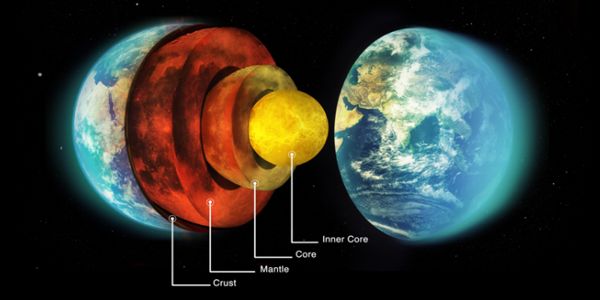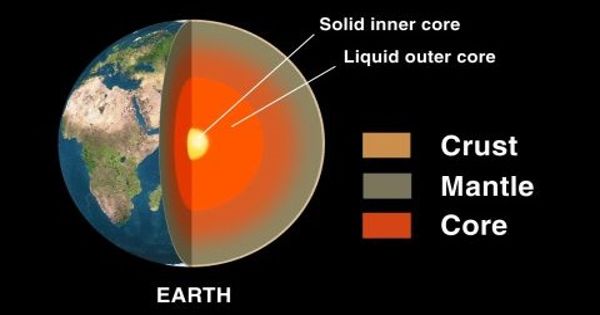Solar wind particles from our primordial Sun were encased in the Earth’s core over 4.5 billion years ago, according to high-precision noble gas analyses. The particles were found in the overlying rock mantle over millions of years, according to the researchers. Solar noble gases were discovered in an iron meteorite studied by scientists. These meteorites are frequently used as natural models for the Earth’s metallic core due to their chemical composition.
Iron meteorites are a rare type of meteorite that accounts for only 5% of all known meteorite finds on Earth. The majority are fragments from larger asteroids that formed metallic cores during the first one to two million years of our Solar System’s existence. The Washington County iron meteorite, which is now being studied at the Institute of Earth Sciences’ Klaus Tschira Laboratory for Cosmochemistry, was discovered nearly 100 years ago. Its name is derived from the location where it was discovered in Colorado (USA). According to Prof. Dr. Mario Trieloff, head of the Geo- and Cosmochemistry research group, it resembles a metal discus, is six centimeters thick, and weighs approximately 5.7 kilograms.
The scientists found solar noble gases in an iron meteorite they studied. Because of their chemical composition, such meteorites are often used as natural models for the Earth’s metallic core.
The outward expansion of plasma from the Sun’s corona generates the solar wind (outermost atmosphere). This plasma is constantly heated to the point where the gravity of the Sun can no longer hold it down. It then travels along the magnetic field lines that extend radially outward from the Sun. As the Sun rotates, its magnetic field lines above its polar regions wind up into a large rotating spiral, producing a constant stream of “wind.”
The researchers were able to conclusively demonstrate the presence of a solar component in the iron meteorite. Using a noble gas mass spectrometer, they discovered that the samples from the Washington County meteorite contain noble gases with helium and neon isotopic ratios typical of the solar wind. “The measurements had to be extraordinarily accurate and precise to differentiate the solar signatures from the dominant cosmogenic noble gases and atmospheric contamination,” said Dr. Manfred Vogt, a member of the Trieloff team.
The team hypothesizes that in the early Solar System, solar wind particles were trapped by the precursor materials of the Washington County parent asteroid. The noble gases that were captured along with the particles were dissolved into the liquid metal that formed the asteroid’s core.

The Heidelberg researchers were able to conclude by analogy that the core of the planet Earth might also contain such noble gas components as a result of their measurements. Another scientific observation lends credence to this assumption. Prof. Trieloff’s group has long measured solar noble gas isotopes of helium and neon in igneous rock from oceanic islands such as Hawaii and Réunion.
These magmatites are the result of a type of volcanism fueled by mantle plumes that rise thousands of kilometers deep in the Earth’s mantle. Their high solar gas content distinguishes them from the shallow mantle represented by volcanic activity on submarine mid-ocean mountain ridges. “We’ve always wondered how such diverse gas signatures could exist in a slowly but constantly convecting mantle,” says the Heidelberg researcher.
Their findings appear to confirm the hypothesis that the solar noble gases in mantle plumes originate in the planet’s core and thus represent solar wind particles from the planet’s core. “Just one to two percent of a metal with a similar composition as the Washington Country meteorite in the Earth’s core would be enough to explain the different gas signatures in the mantle,” Dr. Vogt claims. As a result, the Earth’s core may play an underappreciated active role in the geochemical development of the Earth’s mantle.
When the solar wind collides with Earth, it is deflected by our planet’s magnetic shield, causing the majority of the energetic particles to flow around and beyond us. The magnetosphere is the region where the solar wind meets and is blocked. Because the Earth’s magnetosphere reacts to the Sun’s activity, the space around our atmosphere is alive and dynamic.
















